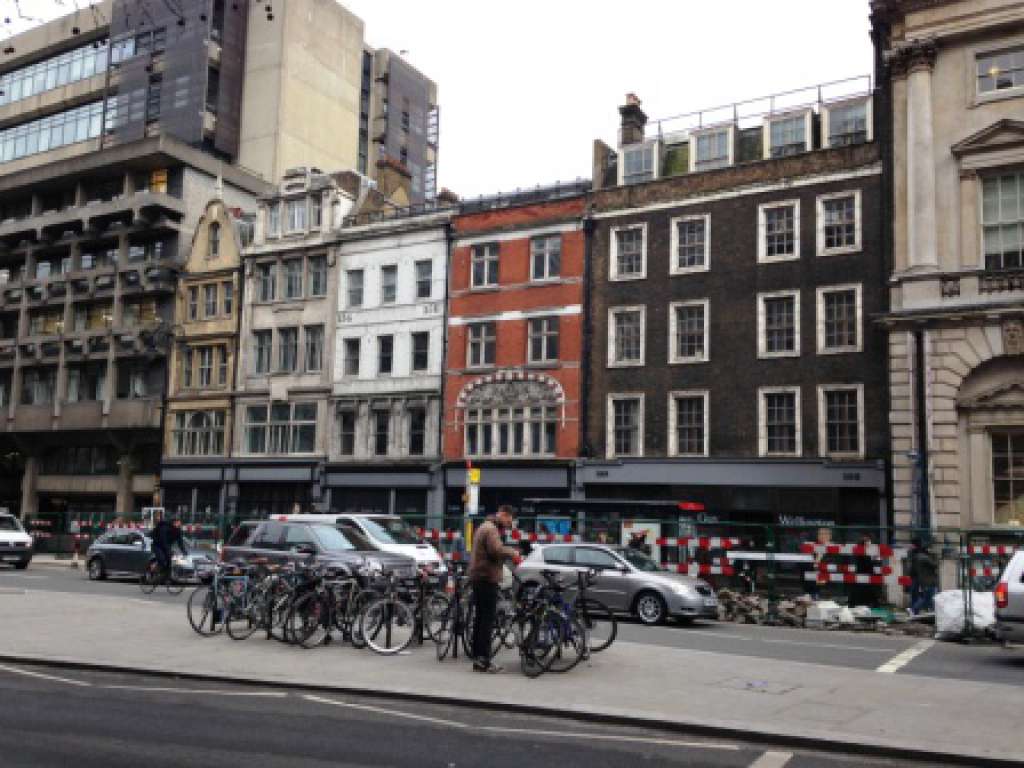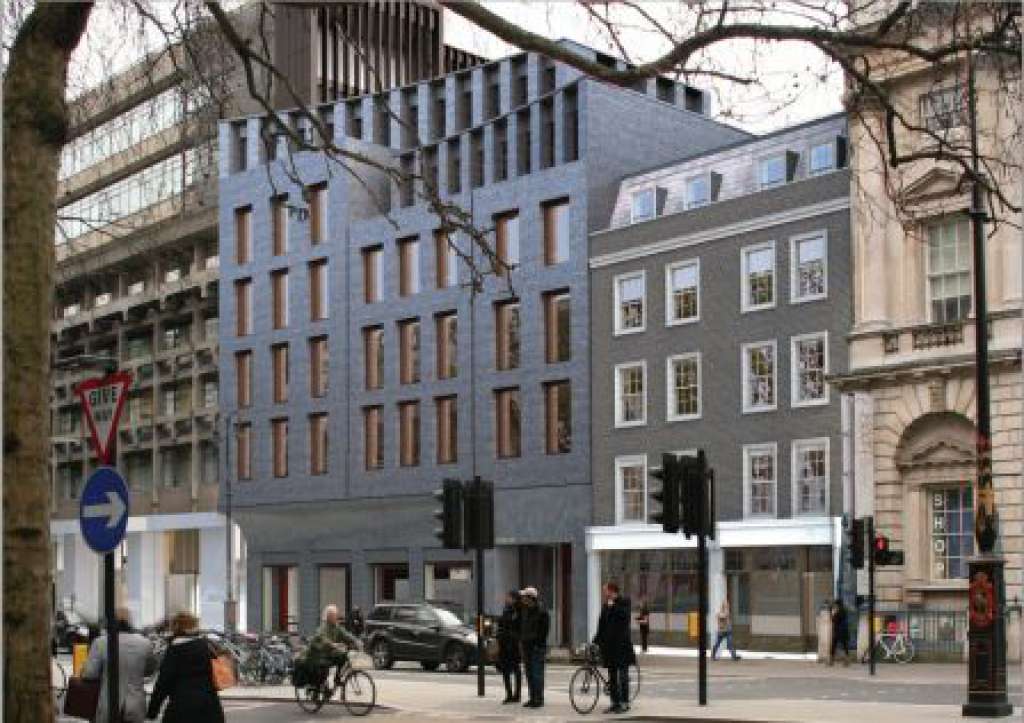Press Release: Kings College London proposes demolition of a group of distinctive historic buildings on one of London’s most famous thoroughfares: SAVE objects
21 April 2015
Press release: Kings College London proposes demolition of a group of distinctive historic buildings on one of London's most famous thoroughfares: SAVE objects.
SAVE is robustly objecting to a planning application from Kings College, London, to demolish four buildings on the Strand that goes to planning committee tonight in the City of Westminster (Tuesday 21st April).
The proposal is to demolish 154-158 Strand to form a new academic building and to retain only the façade of 152-153 Strand.
These are historic buildings of great charm on one of London's most historic and central thoroughfares: the procession route from St Paul's Cathedral to Buckingham Palace. The existing buildings also provide the setting for the Grade I listed Somerset House and St Mary Le Strand.
This streetscape has already been damaged by King's College's Brutalist building to the east of Somerset House. No further encroachment of this kind should be allowed. The character of central London depends on a balance between large institutional and commercial buildings and smaller scale buildings on narrow plots.
The entire group of threatened buildings are in the Strand Conservation Area, while one of them is listed Grade II. The ones slated for demolition are singled out in the Conservation Area Audit as Unlisted Buildings of Merit, which contribute to the character and appearance of the Conservation Area. This should, according to local planning policy, safeguard them from this kind of proposal.
SAVE is in no doubt that the demolition of 154-158 will have a visibly adverse effect on the area's recognised special character and appearance. Views up and down the Strand will be adversely affected.
The proposed design does not respect Westminster's heritage and local distinctiveness - it replaces a group of buildings with distinctive façades and replaces them with something terrifically bland.
We call on the University and Westminster Council to reconsider entirely their plans for 152-158 The Strand. As an important national institution, we believe that Kings College must lead the way in observing planning law and retaining the historic character of its campus and the conservation area in which it is situated.
The Ancient Monuments Society, the Victorian Society, LAMAS, The Courtauld Institute and the Somerset House Trust have also objected to the scheme. Historic England (formerly English Heritage) has not objected, stating that the loss of the buildings would cause 'less than substantial harm.' SAVE strongly disagrees with their assessment of the planning application.
The Setting of Somerset House
These proposals will erode a significant element of Somerset House's glory (Grade I listed). Many people walking along the Strand are not aware that such a palatial courtyard awaits them, set back from the busy street. This is because Sir William Chambers had a very restricted street frontage along the Strand and was obliged to design a compact entrance façade between the narrow frontages of the Strand (and Fleet Street) which survive in significant degree to this day and contribute greatly to the character of the Aldwych through their contrast to the monumental character of the buildings across the road.
Sir William Chambers brilliantly resolved the lack of a grand entrance front by creating the finest arched entrance passage in London with three parallel arched vaults supported on clusters of columns. This provides a breathtaking view into the main courtyard where the splendour of the architecture is there for all to see. This contrast between the narrow jostling fronts of commercial premises and grander public buildings represents the very essence of London.
The protection of conservation areas: recent precedents
The recent Public Inquiry into the Western Market Buildings in Smithfield General Market is relevant to this case as it underlines the protection afforded to buildings in a conservation area.
The Secretary of State concluded that demolition of the built fabric of the interior of the buildings was not justified, let alone the exterior.
Both the Inspector and the Secretary of State were emphatic about the importance of the historic environment and historic character of the area. Even though the Western Market Buildings are not listed, the fact that they are part of the Smithfield Conservation Area was enough to afford them protection.
While it is a different part of London, SAVE considers that this part of the Strand Conservation Area would be substantially harmed by the total loss of four buildings and the retention of only the façade of a fifth, on one of London's main thoroughfares.
Public Benefits versus Substantial Harm
The National Planning Policy Framework paragraphs 133 and 134 state:
Where a development proposal will lead to less than substantial harm to the significance of a designated heritage asset, this harm should be weighed against the public benefits of the proposal, including securing its optimum viable use.
SAVE considers that harm outweighs public benefit in the proposed scheme. It is important that the university doesn't use the obvious public benefits of other aspects of the scheme to justify demolition of these buildings. In addition they must remember that the view of the Strand is shared by everyone who passes by - this decision will have an impact way beyond the confines of the university.
In 2013, SAVE Britain's Heritage and the Victorian Society challenged Sheffield University in a Judicial Review regarding the proposed demolition of a designated heritage asset - Jessops Hospital, Grade II listed. SAVE lost the case but, crucially, the judge agreed with our interpretation of para 134, which consisted of asking whether the council had considered if demolition was necessary in order to achieve public benefit. Did they ask the question - what is the public benefit to be had from the non-demolition options versus the demolition option?
SAVE does not consider that these questions have been asked in this case. There has not been enough demonstration of other options, and therefore this course of action is not justified in planning law.
SAVE challenges the very idea that these buildings need to be demolished and has called on the planning application to be refused. SAVE considers that in the light of their own policies for the site, and of national policies for the protection of designated heritage assets, there would be strong grounds for challenge if the council is minded to grant planning permission.
SAVE President Marcus Binney says: "Wherever these narrow frontages survive, in the City or streets leading up to it such as the Strand, it is vital that they are preserved. In this case they provide the frame for the picture within and form an essential part of the townscape of one of London's best known streets. This is one of the most historic streets in the City of Westminster and must be safeguarded."
For more information and images, please contact the SAVE Office on 0207 253 3500 or office@savebritainsheritage.org, or Clem Cecil on 07968 003 595
Notes to editors:
SAVE Britain's Heritage has been campaigning for historic buildings since its formation in 1975 by a group of architects, journalists and planners. It is a strong, independent voice in conservation, free to respond rapidly to emergencies and to speak out loud for the historic built environment.
SAVE Britain's Heritage, 70 Cowcross Street, London EC1M 6EJ
Registered Charity 269129
Tel. 020 7253 3500
Email office@savebritainsheritage.org
www.savebritainsheritage.org
Follow SAVE on Twitter: @SAVEBrit


